Please Note: This post is about a salmonella outbreak that occurred in several parts of the United States in winter and spring 2021. While that outbreak has passed, cleaning and disinfecting your feeders is always a good practice.
I’ve lived next to the same retired couple for 20 years. They’re kind with words and consistent with seed. Their place is breakfast for the birds. My place is the bathroom. I saw my first Steller’s jay on our shared wood-slat fence last spring. Exciting. But I’ve cleaned up bird poop for 20 years. Not exciting. I’m regularly hosing down my backyard because my neighbors keep a full bird feeder in their front yard.
Well, they did until this year. I walked the block last night. Their bird feeder is empty and cleaner than I’ve ever seen it. As it should be.
Eastern Idaho, where I live, is in the middle of a salmonella outbreak. It’s not a localized occurrence. Birds across the West are sick and spreading the illness as they congregate then migrate. Cases are coming in from Washington to Utah and to the east, North Carolina is having trouble too.
While bird feeding is experiencing a pandemic boom in popularity, feeding birds at this moment is having dire consequences. Birds are dying in no small part due to bird feeding.
You can still enjoy birds. But it’s time to remove seed and take down the feeders.
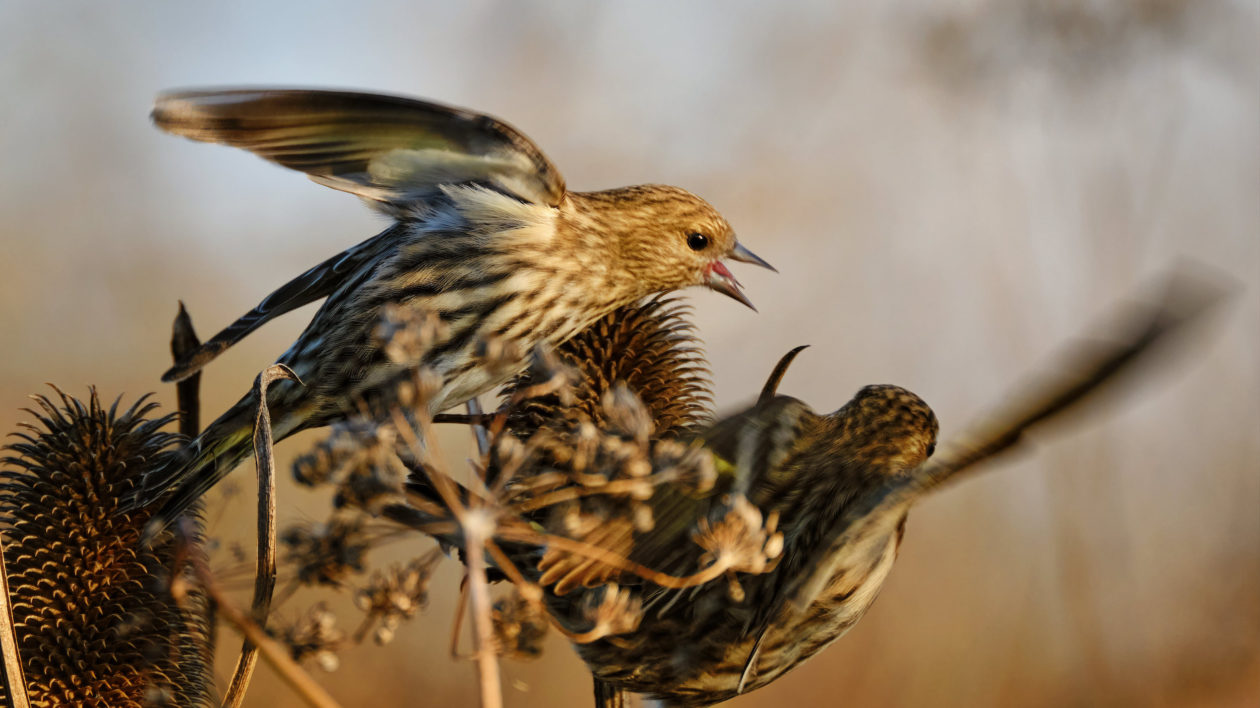
Outbreak
Songbirds are prone to salmonellosis, commonly called salmonella. Pine siskins are songbirds and they experienced an irruption over the winter. That’s a population explosion so there’s a lot of them flitting about this winter. Many of them are sick.
“This is the biggest outbreak I’ve heard of and I’ve been following birds for 25 years,” says Nicole Michel, National Audubon Society director of quantitative science. “It all ties into pine seed crops in the boreal regions where they usually are. There weren’t enough seeds so they came south. They’re weak because they’ve traveled farther than they’re used to and they’re congregating wherever they can eat.”
Salmonella starts when bird food gets wet. That’s how the bacteria grows on seed then it spreads through feces dropped in the same place. Salmonella is a fatal bacterial infection for birds and it’s hitting siskins hard because they congregate around feeders, but the outbreak isn’t species-specific. Anything eating seed in your yard, resident or migrator, can spread or contract salmonella. The three Ds of symptoms include ‘depressed, drowsy and diarrhea.’ Depression won’t be obvious in wildlife, but drowsy will. Infected birds close their eyes often and they puff up, like they do in cold weather, but they’re not cold. They’re sick.
California started seeing more cases in December. Other states are seeing an uptick this spring as the bacteria continues to spread, which is why more state agencies are asking people to remove their bird feeders.
“When large numbers of pine siskins congregate, the disease can spread rapidly causing high mortality,” says Krysta Rogers, California Department of Fish and Wildlife senior environment scientist and avian disease specialist. “Most birds die within 24 hours of infection.”
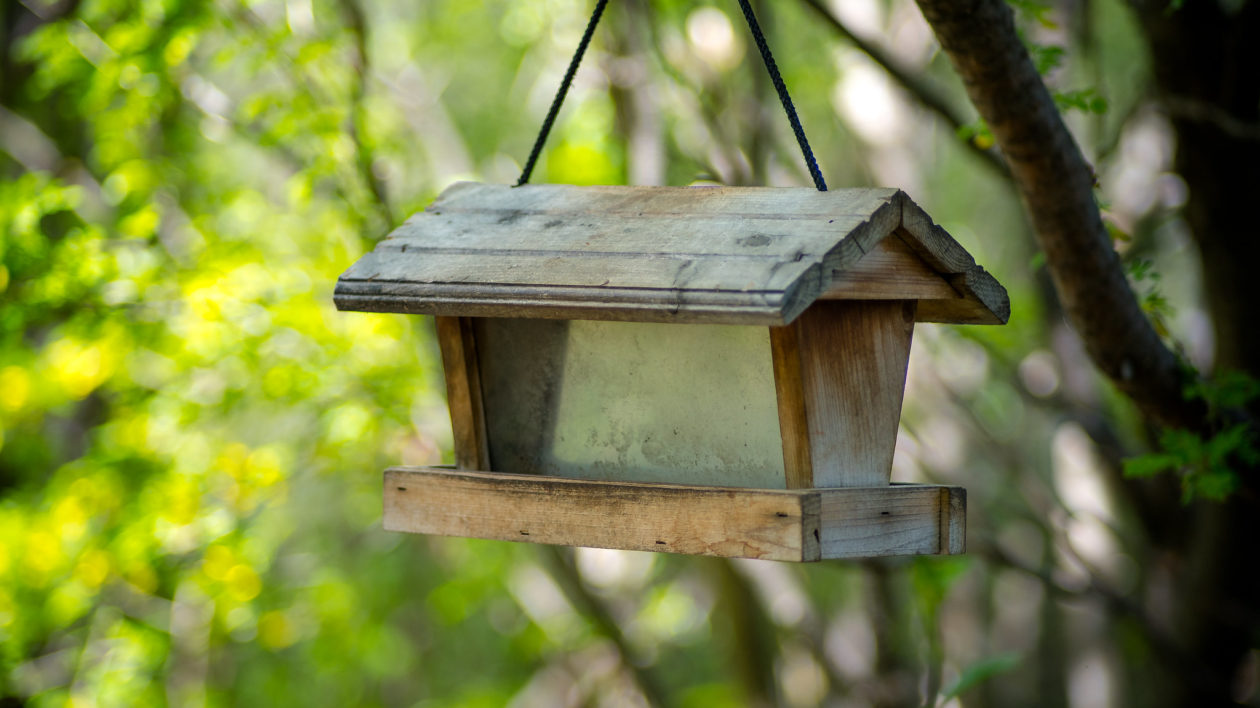
Clean Your Feeders
What those birds leave behind, feces and germs, lingers and it comes in contact with anything else enticed to perch nearby. That’s why you have to clean.
Clean feeders once a week with warm soapy water in normal years. Clean them several times a week during salmonella years like the one we’re in now. Better yet, clean it with one part bleach to 10 parts water.
Soak the whole thing in that solution for about 10 minutes then air dry the container while you remove spent grain and other waste from the area around and under the feeder hanger. Put on gloves before you clean and wash your hands after handling equipment or collecting dead birds.
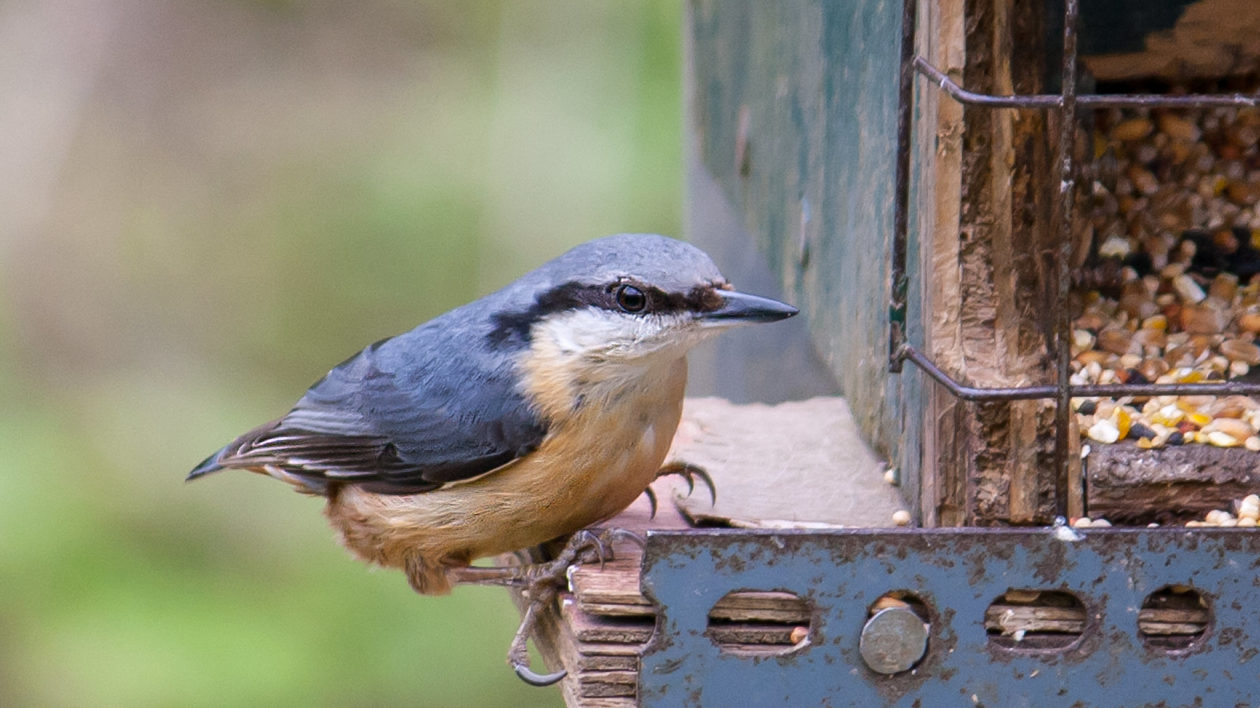
Encourage Avian Social Distancing
Especially this year, don’t stop at cleaning. Put your feeder away for a month. Michel, based in Portland, Oregon pulled her feeder for two months. If you must rehang your cleaned feeder, hang it empty.
“There’s a lot of other food sources they can still find,” Michel says. “The risk of death by starvation is lower than the risk of death by salmonella if you keep a contaminated feeder up.”
It’s the concentration of birds in one place that spreads the problem, but they won’t hang around if there are no hand-outs. The birds need to social distance to save themselves. And not to worry, they won’t starve without your supply.
“Although stopping feeding may seem like it will harm birds, in reality, they use feeders as just one source of food and will quickly disperse to find other food sources and in so doing, reduce transmission of this disease at feeding sites,” says Tempe Regan, Idaho Department of Fish and Game regional diversity biologist. “Sanitation is critical and it is your responsibility to ensure your feeders are not facilitating disease transmission.”
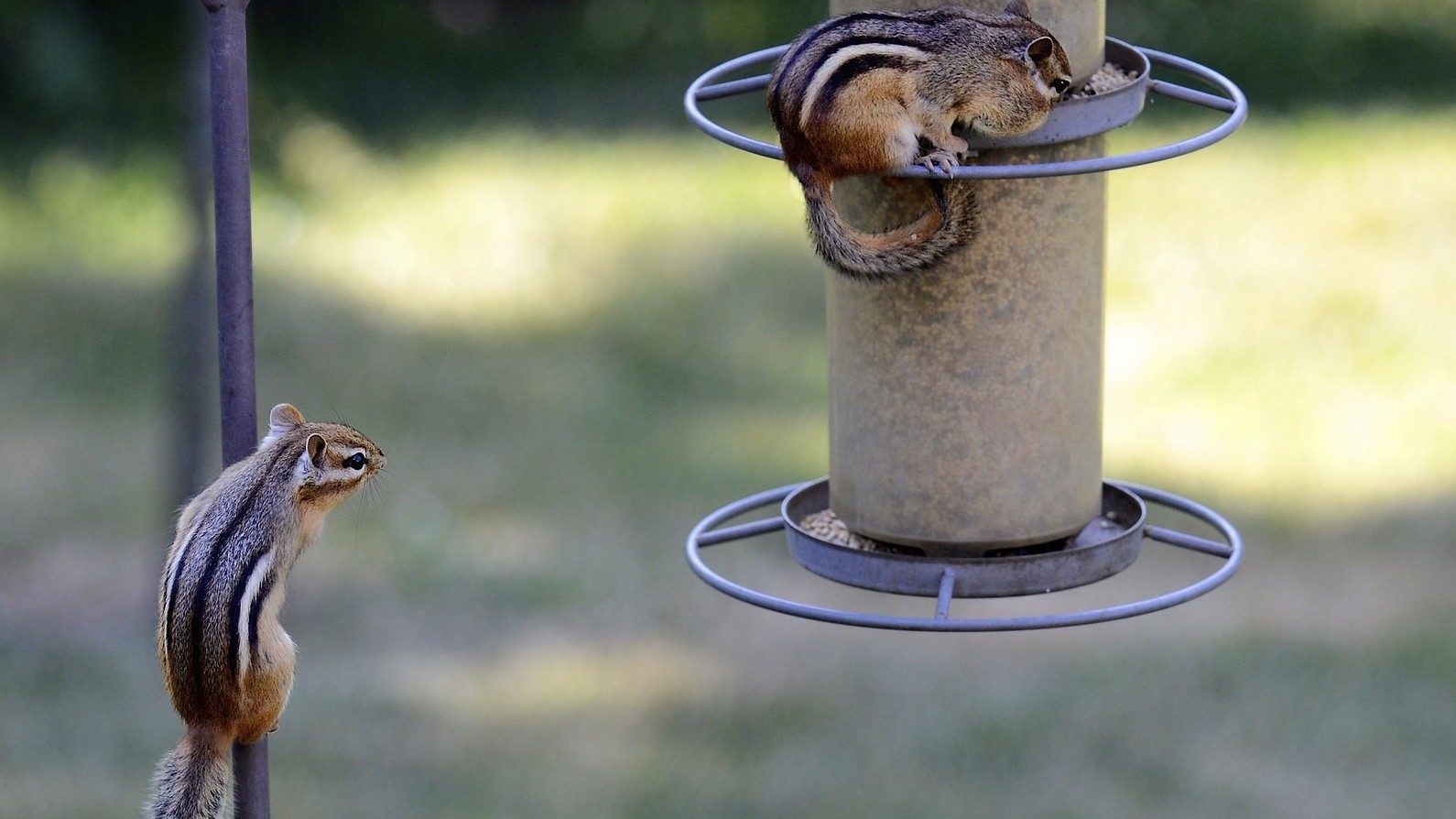
Dogs & Cats
Disease transmission to humans is possible. In mammals, the symptoms are more like food poisoning, but pets are a bigger concern especially. The drowsy symptom mentioned above may cause a bird to stay on the ground when approached. Obviously, the same is true if it dies. That’s an easy meal for a predator allowing the disease to spread to and/or through your furry family member. Keep dogs and cats out of hunt mode in your neighborhood this spring. (And better yet, don’t allow your pets to roam freely and hunt wildlife, ever).
Refraining from feeding birds can be a bummer, especially those new to the birding hobby. But you can still watch what’s moving through without feeding it. The birds are still around. If you have a yard, you may want to consider incorporating natural landscaping that provides habitat without concentrating birds.
Backyard birding has become so popular that is has fueled a seed shortage. But now is not the time to search for seed. Keep the binoculars and field guides handy. For the time being, though, forego the feeding to help the birds you love.
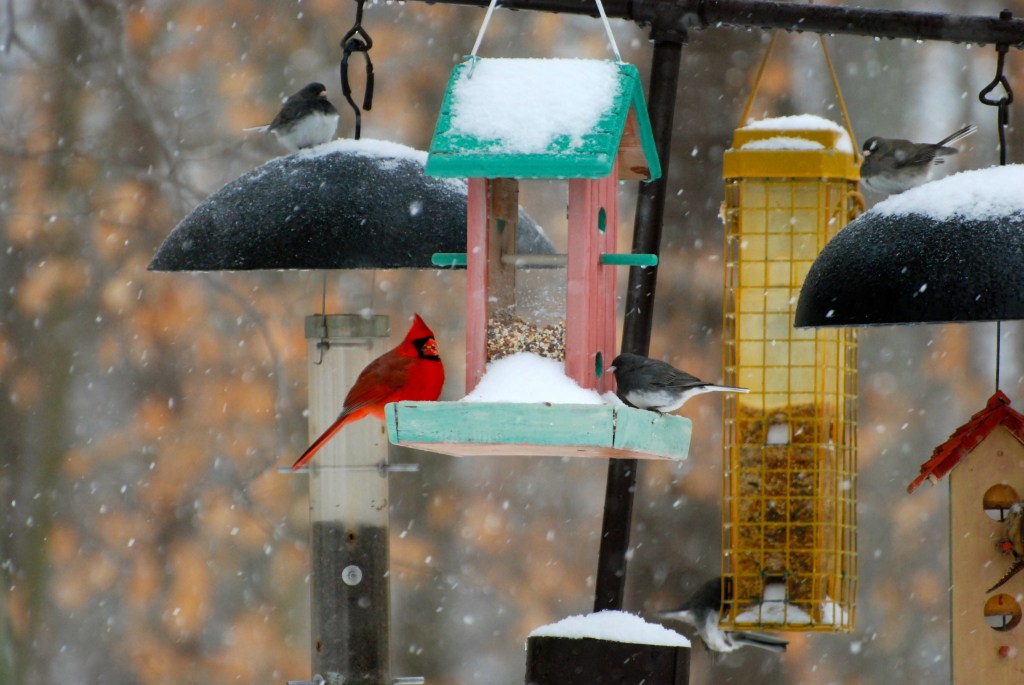



Such a buzzkill
Any idea if this is everywhere in the world or in Southern CA?
Also does this go away unlike our ongoing covid nightmare of 2 years
Tx
It is not everywhere in the world. It has been fairly widespread in the western US and conservationists were concerned that it was spreading. It has been documented in California, but mainly in central and northern parts of the state.
Is this a nation wide problem ? What about Wisconsin? When do we resume feeding?
It was widespread in the western United States and was popping up in other areas. I saw no reports for Wisconsin. At one point, it was spreading rapidly, so caution made sense. I would check with your local state wildlife agency for their input.
Really?? Shut down feeding birds???I live in Chested County Pa, And winter hasn’t quit quite yet. I purposely sprinkle seeds on the ground to let about 6 Species plus squirrels ample room
In many parts of the country, feeding birds was killing them. This outbreak was also spreading fast. It did not affect Pennsylvania this year, so you should be fine. However, cleaning feeders is still a good idea.
How do I know when it’s safe to put up my bird feeder again
I have had my feeders down for 2 weeks. Waiting for the ok from bird experts to tell me its ok to put them up again.
What about hummingbird feeders?
But they said to keep your bird feeders down until April. I took mine down in September 2020. It’s now April 2021. They said the pine siskins will be migrating back to the north. Missouri is already allowed to put their feeders back up. Is that true for North Carolina? My blue birds are nesting and the gold finches gave returned. I really missed feeding them. But I want to be sure that I can put them back up now or soon. I loved your informative article on this topic. Thanks for sharing the advice of your experts. ❤️
What if i raise little finch birds on the inside of my house?
I call BS on this. They lost me at Socialized distancing the birds. Clean your feeder if it gets moldy…but for Pete’s sake don’t let this stop you from enjoying a great pastime with the birds.
Irresponsible to infer this is an issue nationwide. Sanitation of feeders and feeding areas should be done regularly not just when there is an outbreak.
It was a significant problem in the western United States (as stated in the article) and was showing up in other areas.
As of March 31, it is safe to put your birdfeeders back up in WA state.
This story was originally reported in January.
Hi Chris,
Check with your state wildlife agency for their recommendation.
Audubon recommends rinsing the feeder after using the bleach solution, as does the Fish and Game article linked above. Can you add the rinsing step to your directions above? Just want to make sure the bleach is rinsed off the feeders before seed goes back in. Thank you!
I feel some of the problems going on with birds and other animals is ww have genetically modified grains, vegetable. Our water is poisoned from,chemicals, both of which is from spraying, spreading, and our waate and other animals waste that take pharmaceutical,drugs, vaccines, and more.
We have oil companies that are destroying the earth, actually the human racexis worsw than any VIRUS. So do not,blame the salmonella on,the birds.
So not only do they want humans social distancing, now the birds. Clean the feeder and keep feeding.